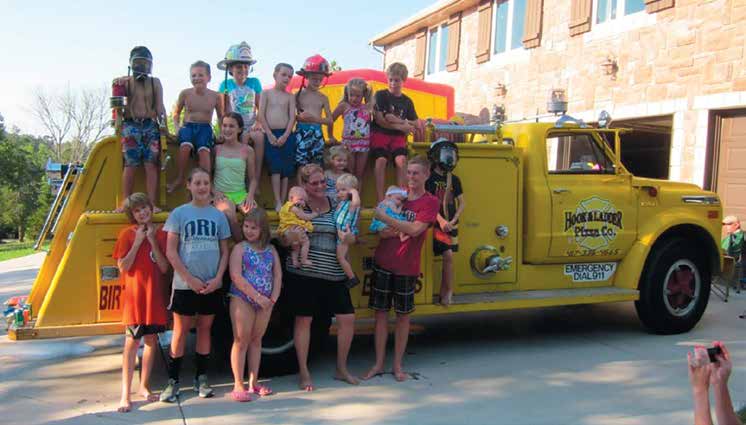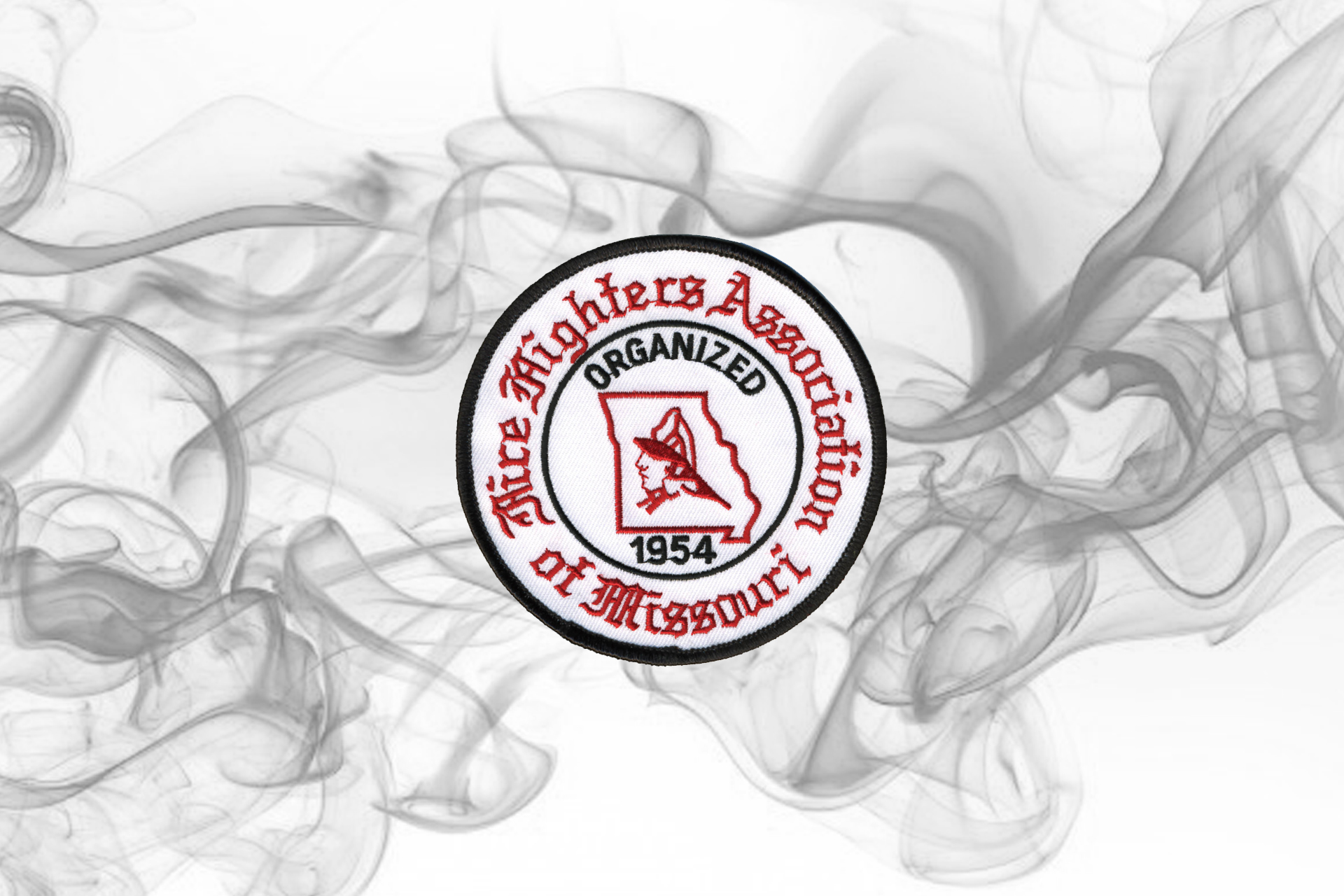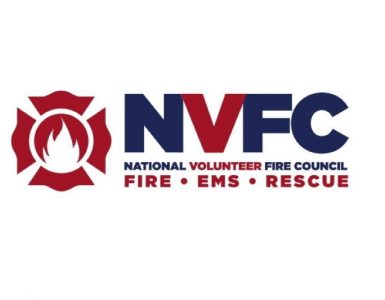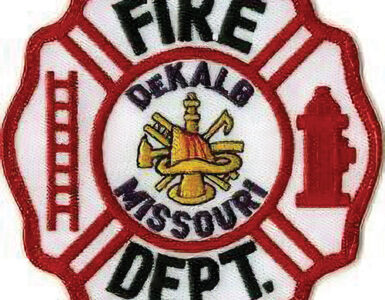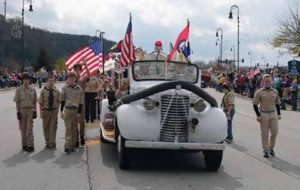
I have a next-door neighbor, Chris Ely, who is a Branson firefighter and an avid collector of all things old and fire related. I’m fairly sure that is why he likes me! He came over a couple of months ago to show me a new fire publication that he was receiving called “Vintage Fire Truck”. Having somewhat of a passion for old fire “stuff” myself, I immediately took out a subscription. After receiving a copy or two, I thought it would be fun to write about antique fire apparatus and several have come to mind. Over the last several years most of my article have been about people and places in the fire service and now we can check out some “things” in the form of apparatus.
Our family has owned a 1939 Chevrolet /Central open cab pumper since we purchased it from Montgomery City Missouri in 1978. Some of our kids have been married on it, and it has been the centerpiece for lots of parades and weddings, as well as a couple of funerals over the years. Our grand kids have gone to forth of July celebrations on it and most recently the transportation of Scout troops for the annual Veterans Day Parade here in Branson.
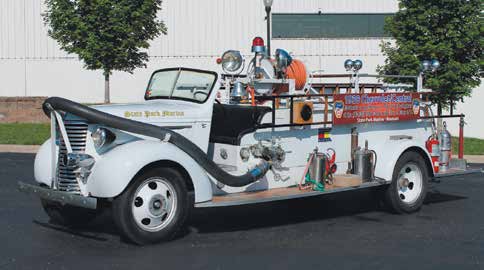
TOWERS FIRE APPARATUS COMPANY
That should be enough information about my play toy. The feature apparatus for this article is the very yellow 1970 Chevrolet/Towers apparatus shown at the bottom of this page.
This fine machine was built in Freeburg, Illinois by the Towers Fire Apparatus Company. As many of the smaller manufacturers around the country, this was a family owned and operated business. Mr. Gene Towers was the owner and his sons and later grand children all worked together to build both front mount and mid-ship mounted pumpers, usually on a commercial chassis.
My first meeting of Mr. Towers was when I was around ten or twelve years old when I went with my Dad to deliver a 1948 Chevy one ton to the Towers plant for the installation of a 500 G.P.M. front mount pump for the O’Fallon Fire Department. Later, in the early 1970’s Boone County Fire District purchased three International 4X4 Hale 750 G.P.M. front mount pumpers from Towers as some of the first new apparatus they owned after passing a fire district on July 11, 1970. I must say I remember much more about the second transaction than the first. Gary Towers was our primary contact with the company then and all the contacts we had over the years were very professional and a pleasure. The company was very innovating and one of the features on the Centralia rig when it was built was the “soda fountain” type pump panel. I talked to my dear friend Grady North when preparing this article. Grady worked for Towers for years as a design engineer and apparatus sales representative. He related the story that Mr. Gene Towers had designed this unique pump panel in the early 1960’s and it was used on a number of apparatus.
The company had a fire department that wanted to know if that discharge panel could be installed on both sides of the rig so an operator could work on either side of the truck. Mr. Towers suggested to the department to install the pump panel above the pump with a place for the operator to stand, thus being able to see both sides of the rig and not be standing on the street. Grady says this was done by Towers in 1966 and was the first above the pump control station built in the industry.
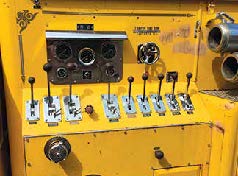
A NEW HOME FOR THE 1970 CENTRALIA PUMPER
I attempted to secure a photo of the 1970 Centralia rig when it was new but was unsuccessful. I did take my friend Grady down to Hook and Ladder Pizza when he was in Branson and he assured me that the yellow color was original and that is the way it departed Freeburg in 1970, along with the red wheels! It apparently served the City of Centralia well until it was traded in on a new apparatus to Firemaster in Springfield, MO. Firemaster is another long running family fire apparatus company originated by Gerald and Carol Shelton and now run by their three very capable sons. Like Towers, they built fire apparatus for years and now represent major fire truck builders.
HOOK AND LADDER PIZZA
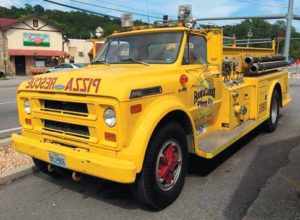
The Chevy/Towers rig sat on the “pre-owned” lot at Firemaster in Springfield for a while, sorta forlorn and wondering what her fate would be. It didn’t take long for someone new to develop a loving relationship with her and started her on a completely new retired career. Those folks were the owners of a new and innovative pizza place in Hollister, Missouri called Hook and Ladder Pizza.
David Herd and his wife Heather are a couple that not only have a passion for the fire service, they know the restaurant business and can really make epic pizza. They both hold hotel and restaurant degrees from one of my favorite places, Oklahoma State University. Dave is an officer with the Western Taney County Fire Protection District and they take every opportunity they have to incorporate fire safety into their business.
Recently, they opened another “Hook and Ladder” in Ozark, MO and both locations are decorated with fire “stuff” that will make you want to drive to one or both of their locations. By the way, the Ozark location has its own “Imperial” apparatus and could be the subject for another article! If you are in the area, breakfast could also include homemade cinnamon rolls called… what else? “Hose rolls.”
If you see the bright yellow Chevy/Towers rig on the road now, she is likely on the way to some kids birthday party loaded with mouth watering pizza. What a great retirement gig!


